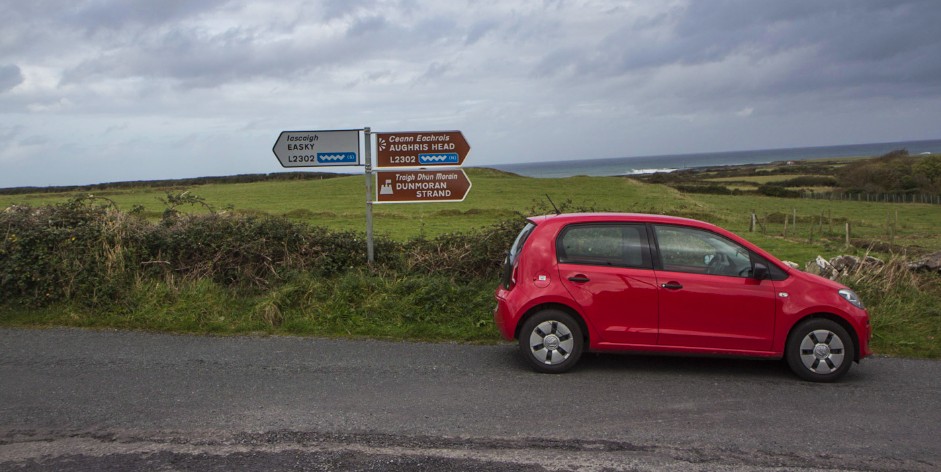
This article may contain affiliate links where I make a small commission for purchases you make from links that you click from this article. By purchasing through these links, you support me at no additional cost to you. Thanks for your support.
Ireland offers a variety of transportation options, from efficient public transit in and between cities to scenic train routes, small group guided tours, and car rentals for those looking to explore beyond the beaten path. I have traveled Ireland extensively, experiencing a little bit of it all, and I now lead my own tours, showing small groups my favorite parts of the country, as well!
How to get around Ireland depends on your travel style, budget, and comfort level. Solo travelers and small groups of friends may prefer the convenience of public transit, while those seeking flexibility and adventure may opt to drive themselves. My preferred way to get around Ireland is to drive myself – I’ve done it many times and it’s always so much fun!
Whatever your situation, understanding your options will help you make the most of your Irish journey.
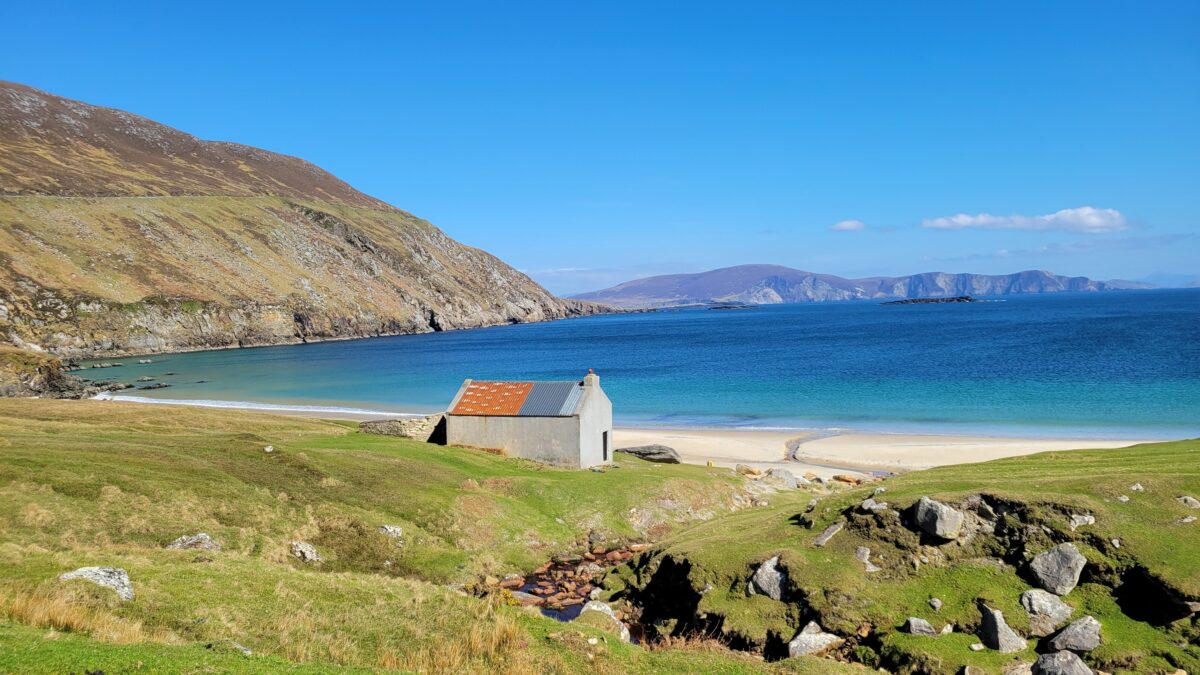
Your Guide to Ireland Transportation Options
Public transport in Ireland is generally reliable and accessible, offering a convenient and affordable way to travel. The main modes of public transport in Ireland are buses, trains, trams (in Dublin), and ferries.
What is the best way to travel around Ireland? Your options will depend on personal preferences, itinerary, and budget. Options include taking guided tours for convenience and local insights, using public transportation like trains and buses for cost-effectiveness and scenic routes, or embarking on a self-guided road trip at your own pace.
I recommend using Rome2Rio or TFI (Transport For Ireland) to compare the routes and prices of the available options.
Trains
 default
default
Irish Rail (Iarnród Éireann) operates the national railway network, connecting bigger cities and towns nationwide. It is less extensive than other European networks. Key routes include:
- Dublin to Cork (InterCity Service) – A significant route linking Ireland’s capital to its second-largest city.
- Dublin to Galway (InterCity Service) – A direct train to the scenic west coast, perfect for exploring Connemara.
- Dublin to Belfast (Enterprise Service) – A cross-border service connecting Ireland’s capital with Northern Ireland.
- Dublin to Limerick, Waterford, and Sligo – Additional routes serving various regional hubs.
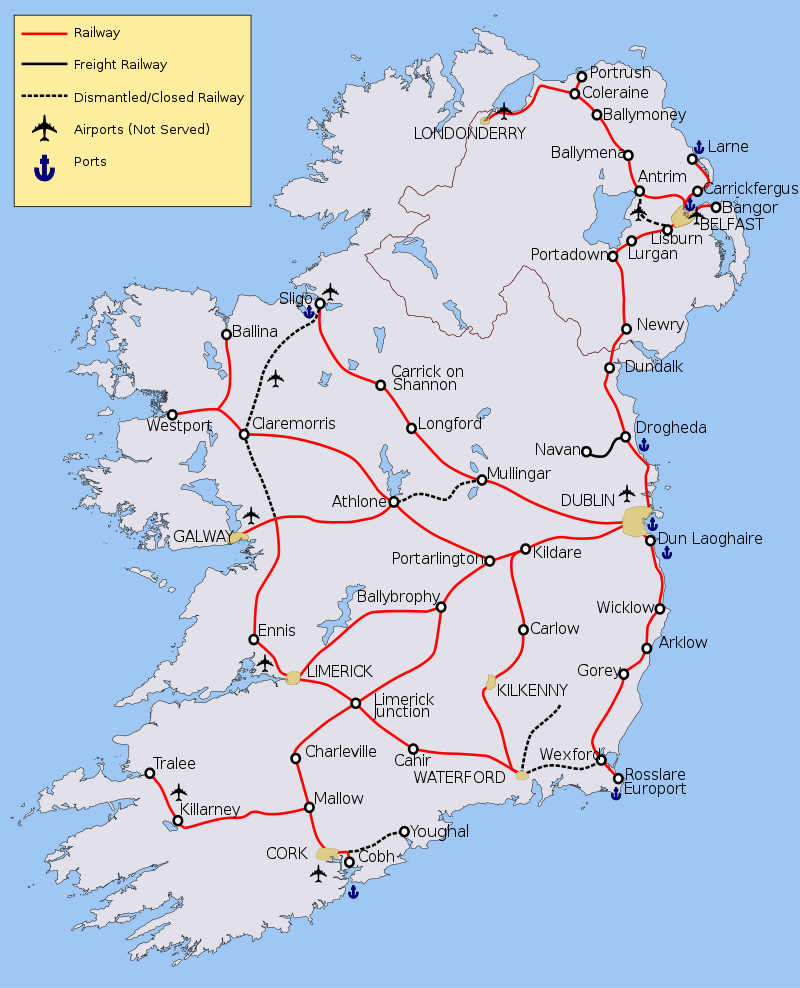
Pros:
- Comfortable seating, scenic views, and no stress of driving.
- Fast and efficient for primary city connections.
- No need to worry about parking or fuel costs.
Cons:
- Limited rural coverage – many areas, including the west coast, lack direct train services.
- Infrequent schedules compared to buses.
- Tickets can be expensive if not booked in advance.
Buses & Private Coaches
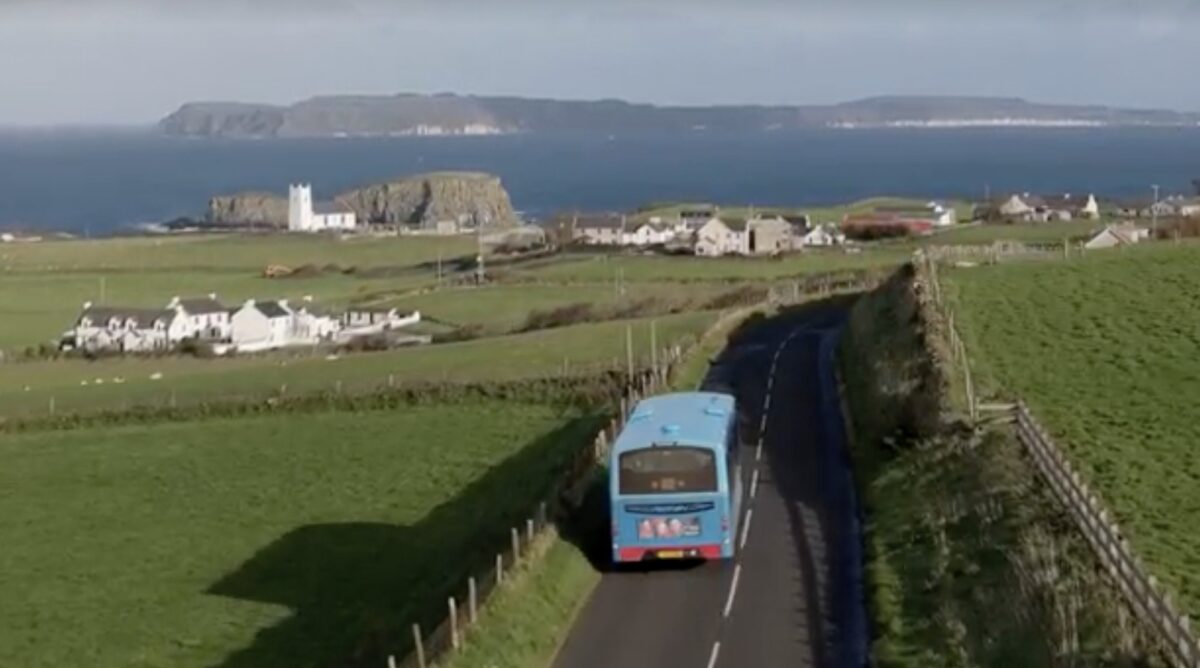
Bus and coach options are plentiful, extensive, and affordable in Ireland, making it one of the best options for budget travelers. In addition, it’s a good option for moving north/south along the coast – something the trains don’t do.
If you arrive in Dublin and want to travel to the West Coast (the best region, in my opinion), many buses leave right from the airport and take you to the main cities on the West Coast, which take about 4 to 5 hours. The primary national carrier is Bus Éireann, which serves major cities and smaller towns nationwide. Private companies such as Citylink and Aircoach provide comfortable and direct intercity routes.
Why Buses Are Great for Budget Travelers:
- Lower Cost: Bus fares are generally cheaper than trains, with competitive prices for long-distance travel.
- Frequent Service: Many routes have hourly or half-hourly departures.
- Extensive Coverage: Buses reach more destinations, including rural towns and villages that lack train access.
- Discount Options: Using prepaid travel cards, various discounts are available for students, seniors, and travelers.
Leap Card: Get Discounted Fares in Dublin
The Leap Card is a prepaid travel card that offers discounts on Dublin Bus and Go-Ahead Ireland, Luas (tram), DART, and Commuter Rail in the Dublin area. It can reduce fares by up to 31% compared to cash payments. Choose 1-day, 3-day, or 7-day passes for €8-€32.
- Where to Buy: Available at ticket machines in train and tram stations, convenience stores, and online.
- How to Use: Tap the card on the reader when boarding and alighting.
- Top-Up Options: Reload at retail locations, through the Leap Top-Up app, or online.
Note: Leap Cards cannot be used for Hop on/Hop off tours or Bus Éireann services.
Local Public Transportation
Additional public transit options are available in Dublin and other major cities.
- LUAS (Dublin Tram System): A light rail service with two main lines (Red and Green) connecting key areas of the city.
- DART (Dublin Area Rapid Transit): A coastal train service running from Malahide and Howth in the north to Greystones in the south, perfect for day trips.
- Taxis: These are readily available in cities and can be hailed on the street, booked via phone, or arranged through ride-hailing apps like Uber or Free Now.
- Uber in Ireland: Unlike in many countries, Uber in Ireland operates differently. Instead of private rides, Uber only offers taxi services, meaning you will be matched with a licensed taxi driver rather than a private driver. Uber rides are metered and follow standard taxi fares.
- Bolt: Another app-based ride service similar to Uber, available in Dublin, often providing competitive pricing.
Renting a Car and Driving in Ireland
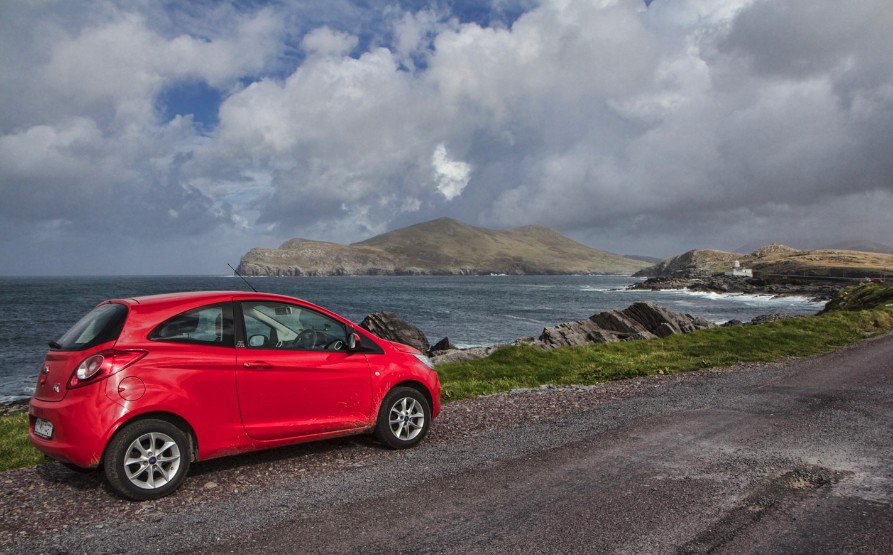
This is my favorite way to travel in Ireland. But I understand that if you are coming from America, it can be daunting. Driving on the opposite side of the road and very narrow roads in the rural areas are just a few of the hurdles. But if I can overcome that, so can you. Ireland is where I first drove on the opposite side of the road, and yes – it was pretty stressful the first time.
But after two days of being hyper vigilant and often reminding myself to stay on the left, my brain suddenly switched. Every day, it became more manageable, and with that, it also became more fun. At the end of my two-week-long road trip, I felt more confident, and driving myself was a highlight of my trip!
Renting a car in Ireland provides flexibility and convenience and is relatively straightforward. You’d be free to explore remote villages, dramatic coastlines, and scenic countryside at your own pace. However, it comes with challenges that travelers should consider before deciding. Some things to consider:
Pros:
- Access to Rural Areas: Public transport doesn’t always reach Ireland’s best-hidden gems, such as the Wild Atlantic Way, Ring of Kerry, and Connemara.
- Flexible Itinerary: There is no need to adhere to bus or train schedules. Stop at viewpoints, local attractions, and small villages at your leisure. And if you love photography like me, you can stop anywhere and take pictures!
- Scenic Drives: Some of Ireland’s most breathtaking parts, like the Wild Atlantic Way, are best explored by car.
Cons:
- Driving on the Left: Adjusting to left-side driving can be challenging, especially for those used to right-hand traffic.
- Narrow, Winding Roads: Many rural roads are very narrow with stone walls and no shoulders.
- Cost: Rental fees, insurance, fuel, and parking can add up, making it more expensive than public transport.
- City Driving & Parking: Dublin, Cork, and Galway have heavy traffic and limited parking, making driving stressful in urban areas.
- Locals drive fast in Ireland, but they are also used to tourists.
- Most rental cars have manual transmissions. To get an automatic, you have to reserve early and pay more, so plan accordingly.
Read about my solo road trip I took around the Wild Atlantic Way, plus get solo travel tips!
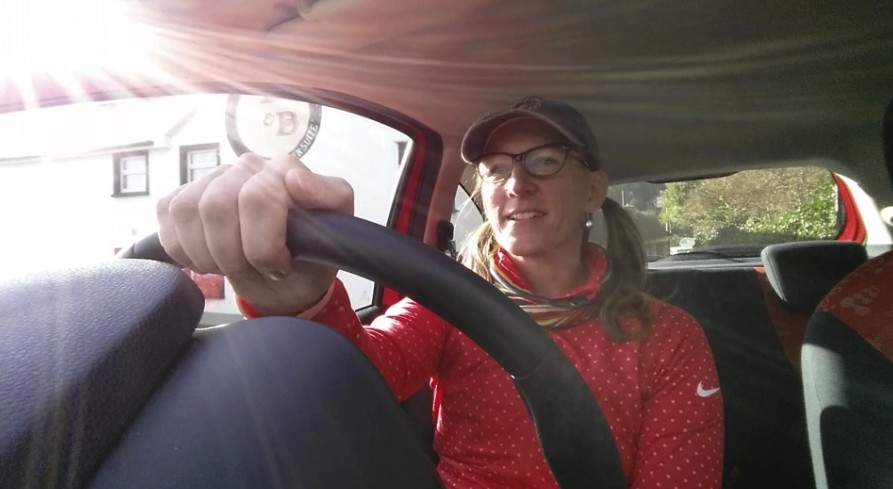 Learning to drive on the left side in Ireland
Learning to drive on the left side in Ireland
I believe Ireland is the perfect place to learn to drive on the left-hand side of the road. However, I do not recommend driving in Dublin until you become more comfortable. Maybe you want to take a bus or train to the West Coast and then rent a car! Buses and trains may be a better option for those staying in cities or following well-connected routes.
Required Documents to Rent a Car
- For US, Canadian, and EU visitors, a valid driver’s license is required. Otherwise, an international driver’s license is required.
- A passport as proof of identity.
- A credit card in the driver’s name for a security deposit and payment.
Essential Driving Laws & Safety Tips
Before you arrive, familiarize yourself with the rules of the road, including speed limits, road signs, and driving on the left side.
- Drive on the left side of the road.
- Roundabouts: Yield to traffic from the right.
- Turning on a red light is illegal; always wait for a whole green or directional green light.
- Speed limits: 120 km/h on motorways, 50 km/h in towns, etc.
- Narrow, winding rural roads: watch out for unpredictable wildlife, farm animals, and tractors.
- Rental car insurance is mandatory in Ireland, and rental companies typically include Collision Damage Waiver (CDW) and Third-Party Liability Insurance in the base price. However, CDW often comes with a high excess (deductible), which can be reduced by purchasing additional coverage. Most U.S. and Canadian personal auto insurance policies do not cover rentals in Ireland. Still, some credit cards offer rental car coverage—always confirm with your provider before declining extra insurance from the rental company.
- Parking rules in Ireland vary by location, with strict regulations in cities like Dublin, Cork, and Galway. Pay-and-display parking is standard, requiring visitors to purchase a ticket from a nearby machine and display it on their dashboard. Many towns have designated parking zones with time limits; illegal parking can result in fines or vehicle clamping.
- If you receive a parking ticket, you typically have a set period (usually within 28 days) to pay the fine, which can be done online or at designated payment centers.
- Parking in small towns and villages can be confusing because there are no rules on which side of the road people can park. This means that cars parked along the road often face different directions. It’s just somewhat confusing at times!
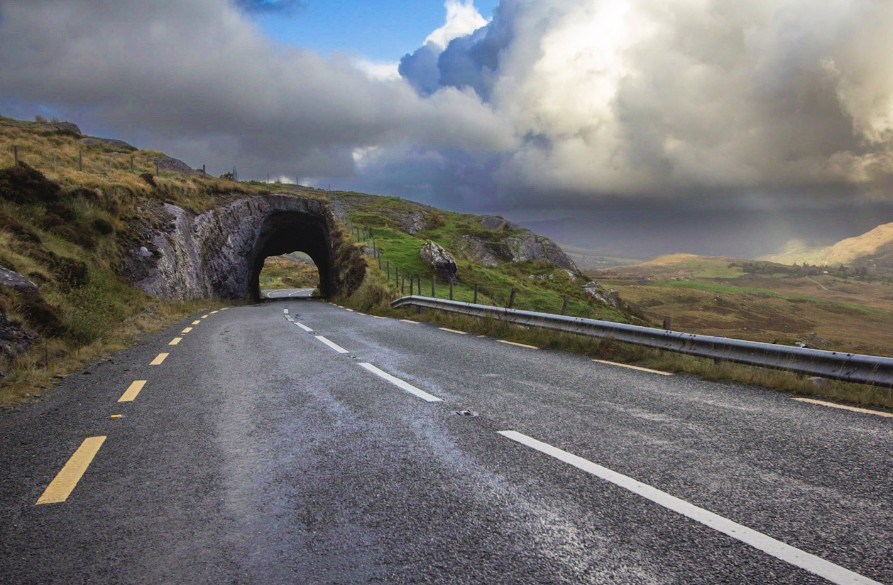
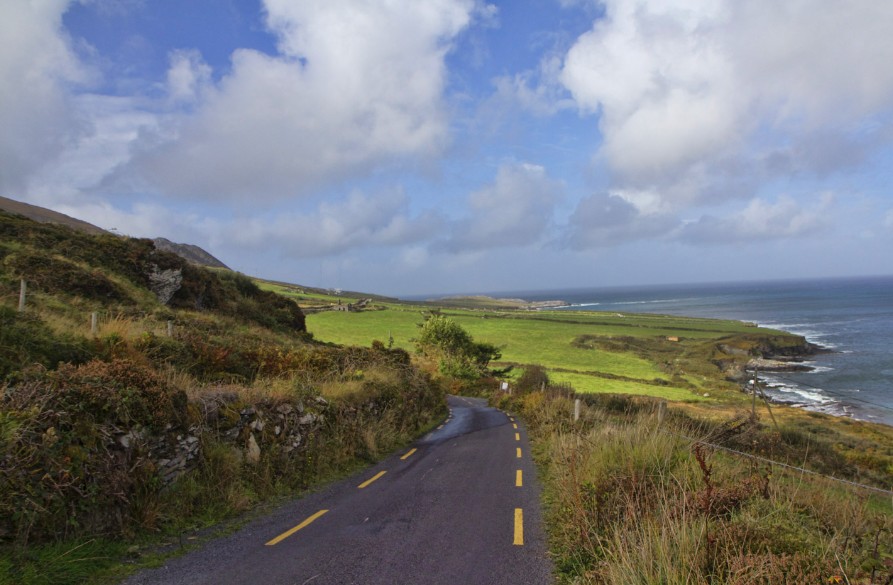
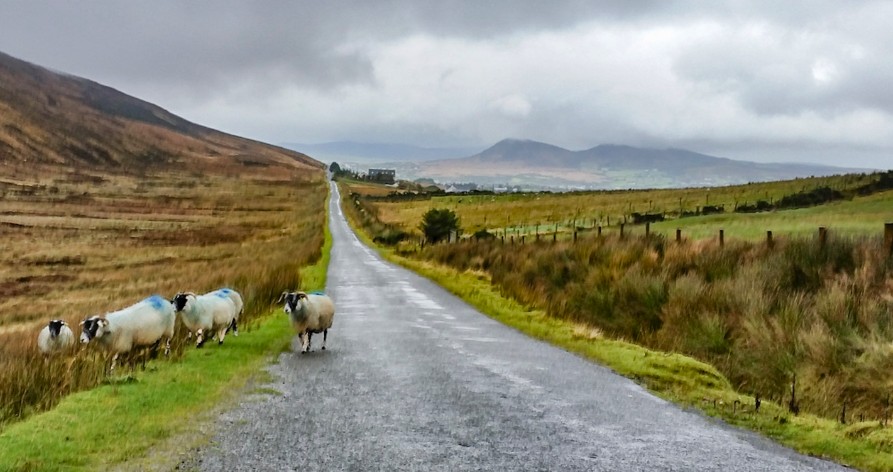
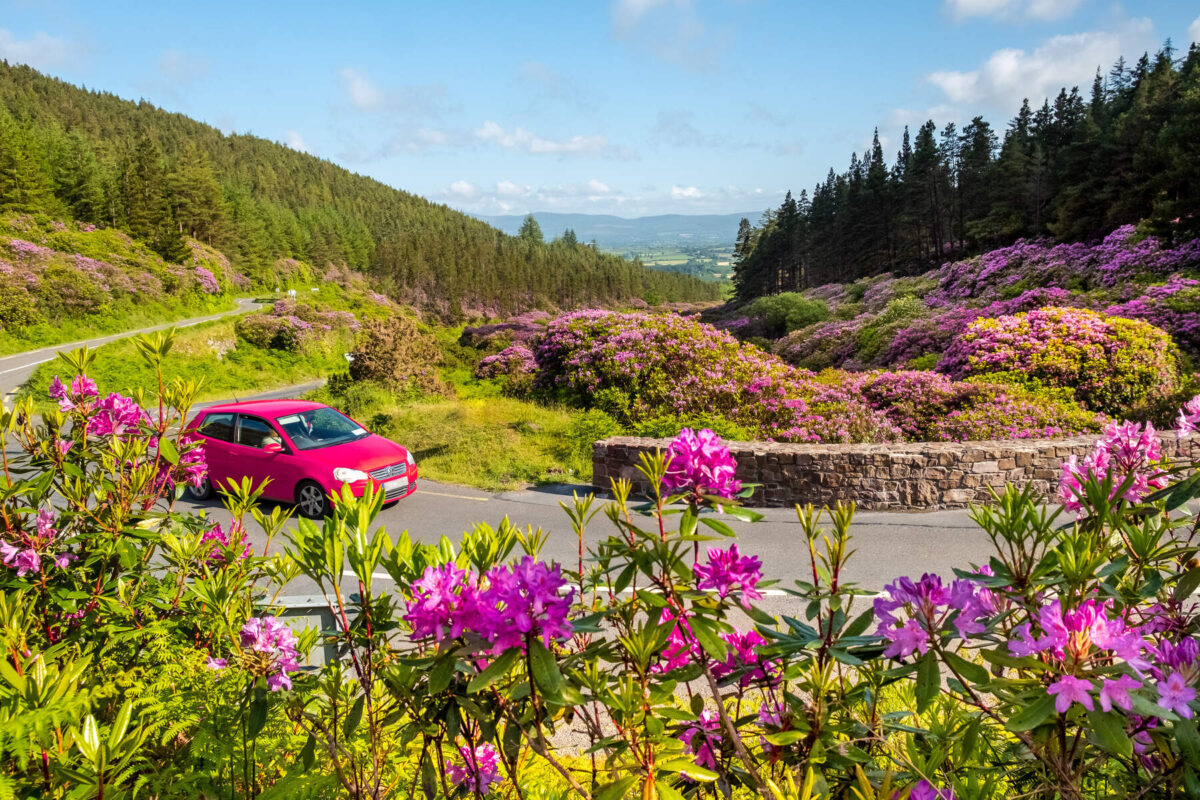
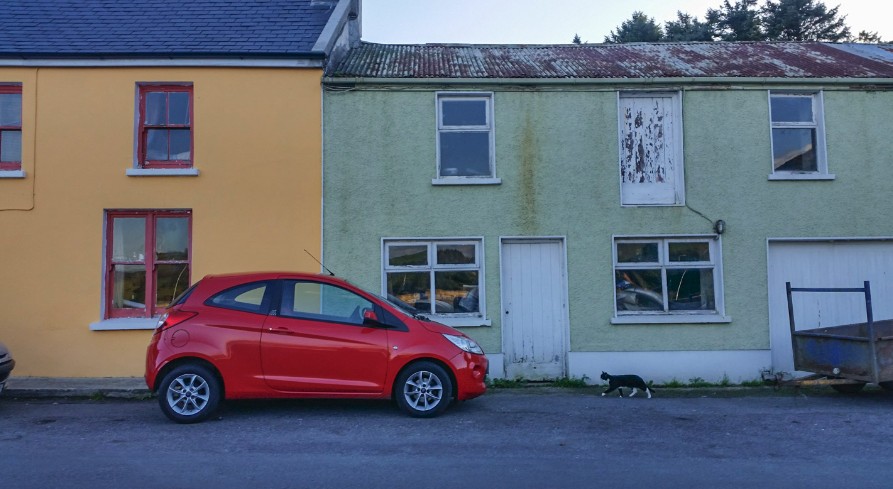
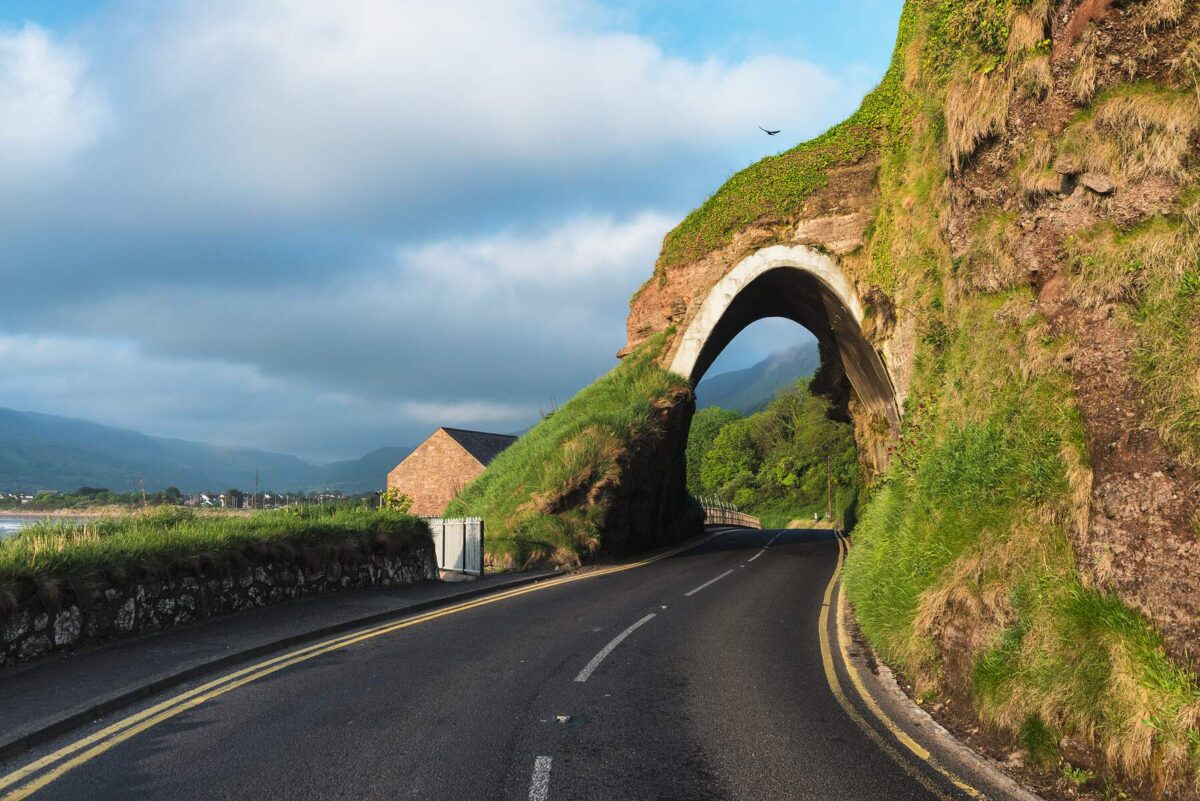
Best Scenic Drives in Ireland
Car Rental Tips
- Automatic transmission cars are more expensive but easier for many. Making a reservation is especially important if you want to get one with an automatic car.
- Rental age restrictions vary by company, but most require drivers to be at least 21 or 25 years old, with additional fees for those under 25. Younger drivers often face daily surcharges and may be restricted from renting larger or luxury vehicles. Some companies impose maximum age limits, typically around 75, and may require older drivers to provide additional documentation, such as a medical certificate.
- The best car rental companies are Hertz, Enterprise, Sixt, Europcar, Avis, and Budget, with locations at Dublin, Shannon, and Cork airports. I have consistently found the best rental car prices on RentalCars.com—check out their rates below!
Ireland Tour Companies & Guides
If you’d rather leave the transportation planning up to someone else, join a tour group! Since launching my first Ottsworld Tour in Ireland in 2017, I have worked with the following companies to plan my unique itineraries. I’m happy to call the people running these companies my friends!
Keep an eye on my tours page for future group trips I offer to Ireland. Also, make sure to sign up for my newsletter to be the first in line for trip announcements.
Additionally, I would be happy to help you plan your dream trip to Ireland. I offer private travel consulting, and Ireland is one of my specialties! Reserve a 30- or 60-minute session with me now!
Other Ways to Get Around
Biking – Cycling is a great way to experience Ireland’s scenic landscapes up close. Popular cycling routes include the Great Western Greenway, which stretches through beautiful countryside in County Mayo, and the Waterford Greenway, which offers stunning coastal views. Bike rentals are available in most major cities and tourist destinations, making exploring at your own pace easy.
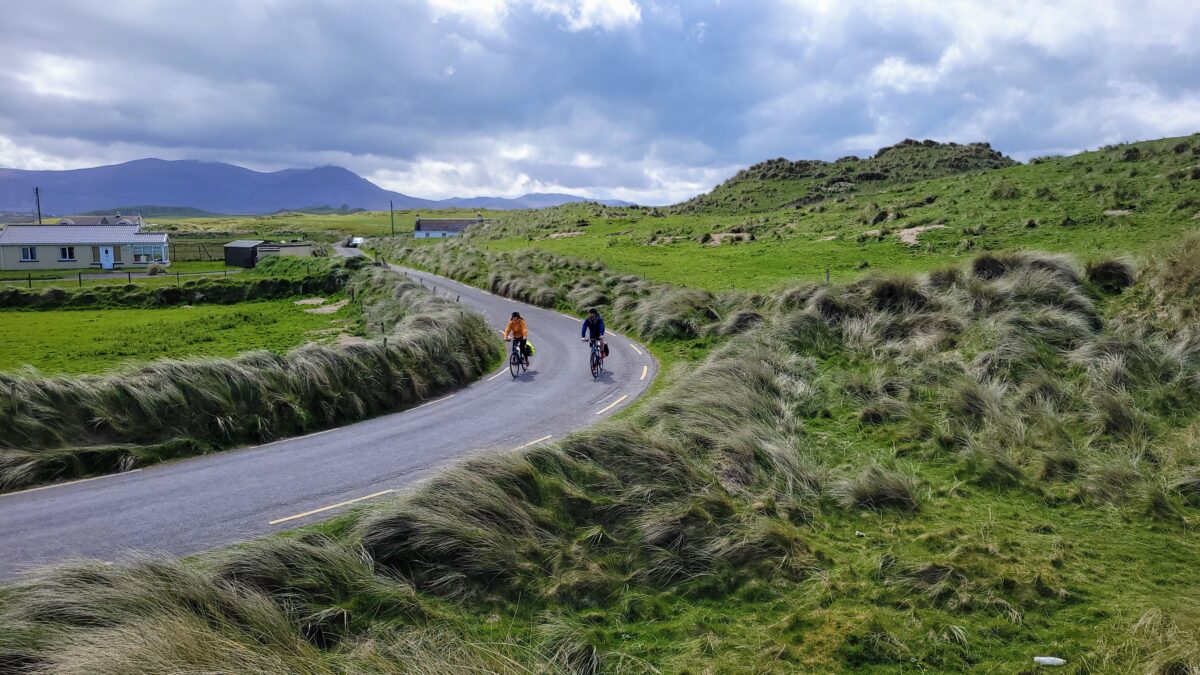
Ferries – Who doesn’t love the view you get from the water? Ferries provide access to Ireland’s offshore gems, such as the Aran Islands, Skellig Michael, and Inisheer. Irish Ferries and Stena Line also offer routes between Ireland, the UK, and France.
Choosing the Best Option for Your Trip
Your best transportation choice depends on your itinerary. Public transport is the most efficient and cost-effective option if you plan to stay in major cities. Trains and buses connect Dublin, Cork, Galway, and Belfast, making exploring without needing a car easy.
Budget and convenience play a role in deciding your transportation. Buses are the most affordable option, while trains offer comfort and speed. Renting a car is more expensive but allows you to visit remote destinations at your own pace.
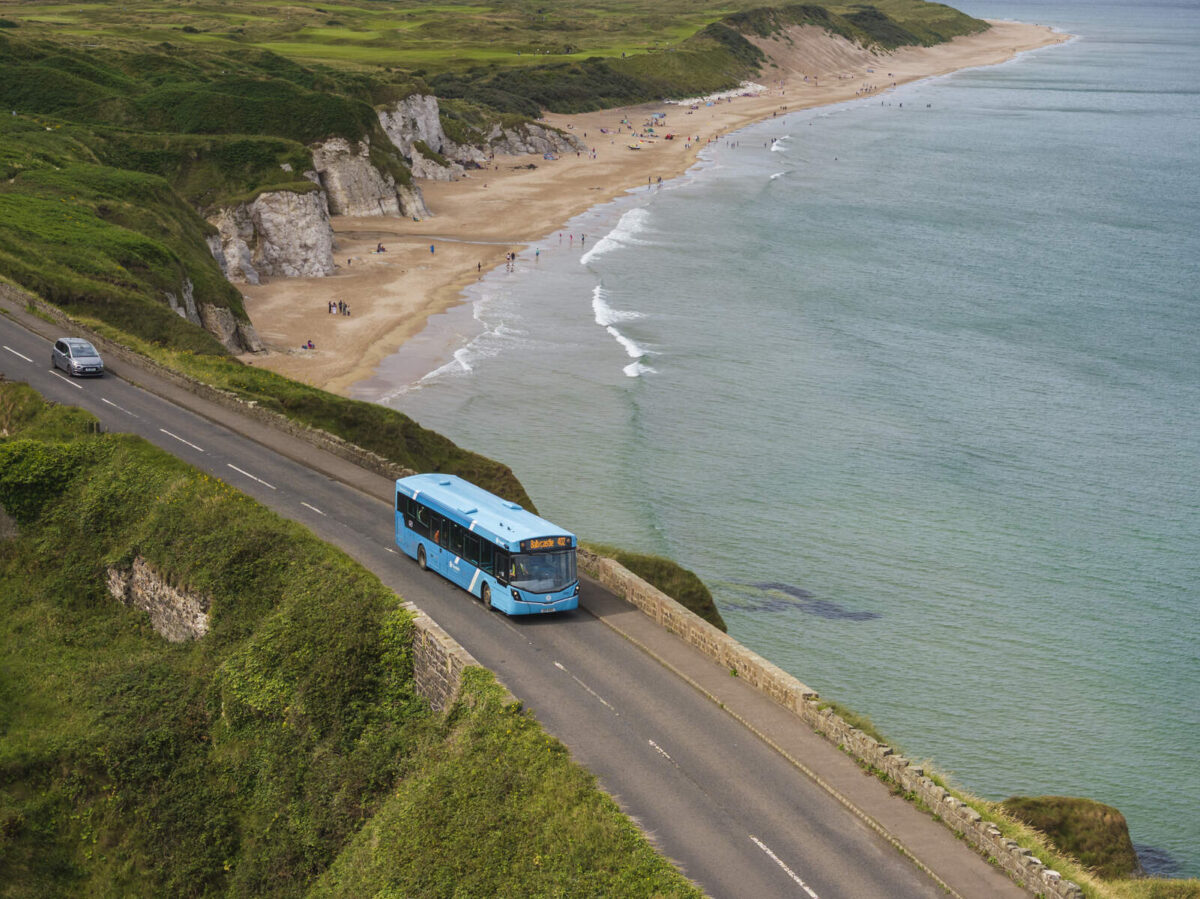
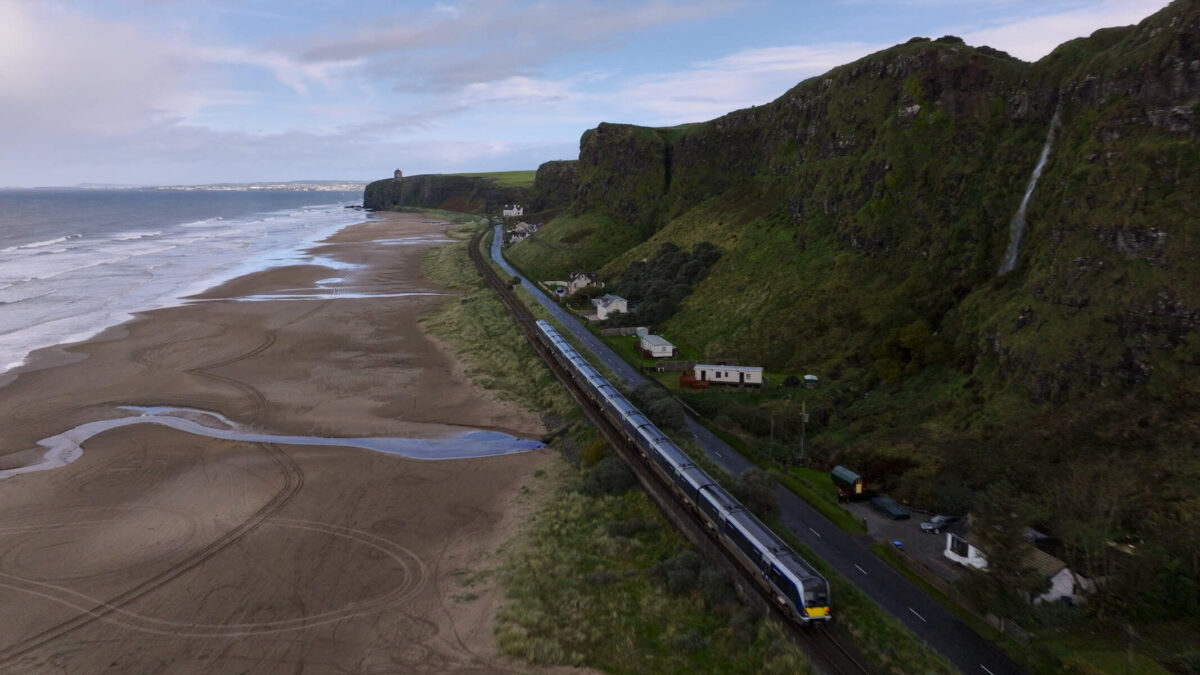
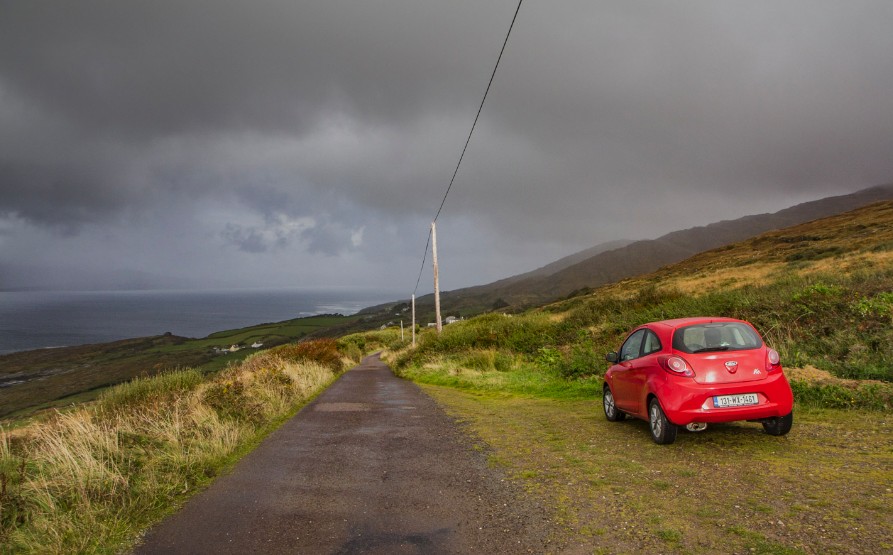
Consider your comfort level with driving. Public transport or guided tours might be better if you are uneasy about driving on the left side or navigating narrow roads. However, driving provides the ultimate flexibility for travelers who enjoy road trips.
Final Thoughts on How to Get Around Ireland
No matter how you get around Ireland, it’s key to select the option that best suits your comfort level, budget, and itinerary. Whether you rely on public transportation or drive yourself, each method offers unique experiences and advantages. Take your time, enjoy the journey, and embrace the adventure of exploring Ireland at your own pace.
Please visit our sponsor:
Our Sponsor
